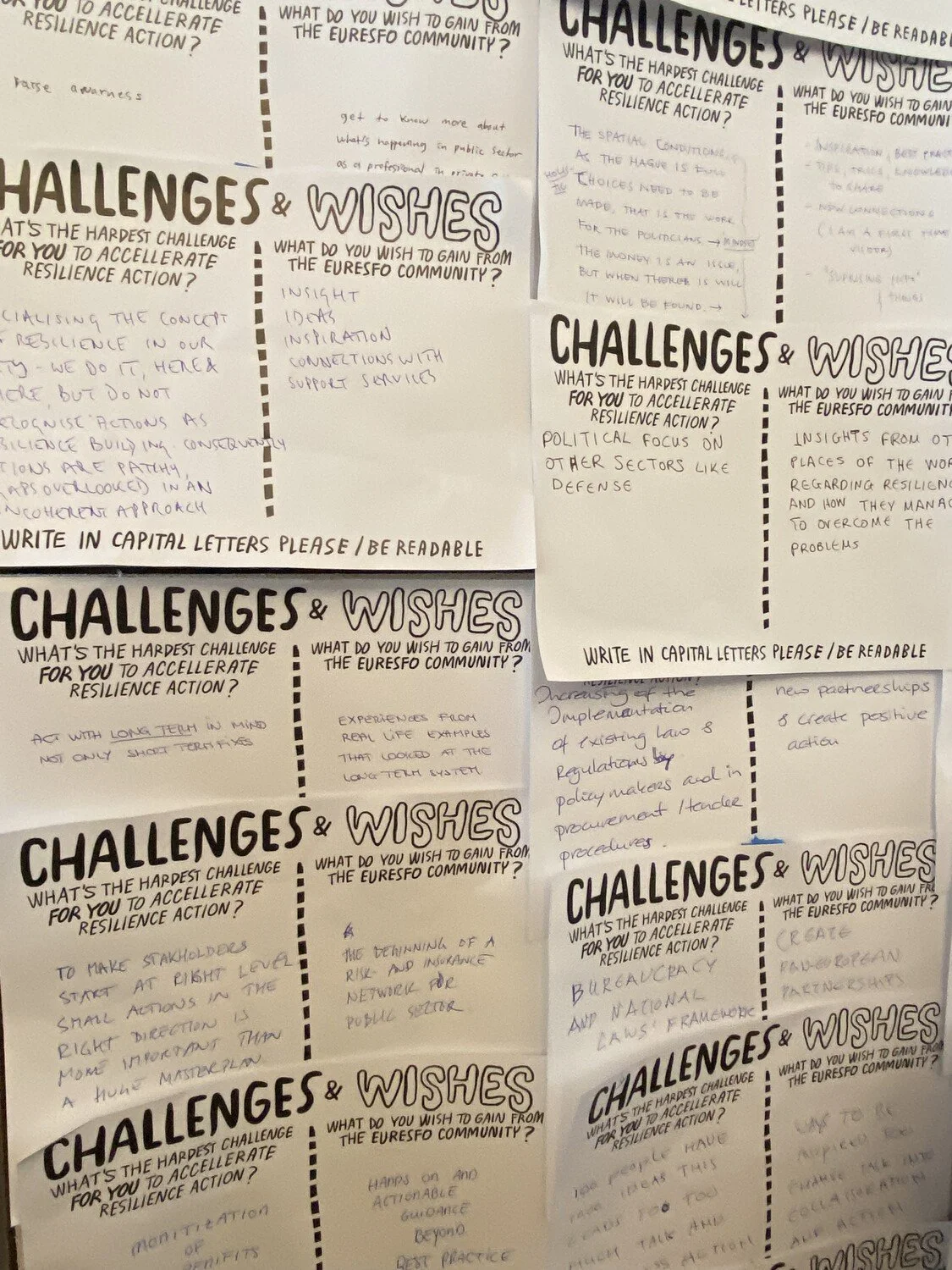Harvesting Collective Intelligence is Easy
If you know how to do it.
It can be a nightmare if you don’t plan for doing it effectively.
I will describe the nightmare:
The day of your workshop arrives, and you planned for everything: speakers, presentations, collaborative breakout sessions, coffee breaks. You think you are done.
The day arrives and you give a task to the participants of your workshops. They go and have a conversations, and they have an amazing conversation, so many gorgeous insights emerge, but: they take notes on 1 million tiny post-its, and they have no where to stick them, or they have a loosely designed paper where they throw the million post-its on, written in several different (and often unreadable) handwriting.
They come back to the plenary and they read out - at the speed of light - a beautiful summary of what they talked about.
A person in the back of the room, only one person usually, is in charge of taking notes on their computer.
The person writes every single word, including Who said What, but is possibly losing large parts of the speech, because it’s just too fast for them. It would be too fast for anyone!
The result is that the notes are quite incomplete, the post-its too many to be summarized quickly at the end of an already busy day, and YOU (the organizer of the meeting) will have to work several more hours to try to find red threads and key messages that you need to put on the report.
The day after everyone will be gone. How will you resume the insights?
Sounds familiar right?
So, how do we harvest collective intelligence effectively?
My suggestion is always: do it in a participatory way.
Do not be scared to ask for help, but first put in place a series of containers (digital or not) where notatakers (note the plural) will have to duly write a useful synthesis of what has been said, while they are listening to the conversations.
You can create, for example, a very easy Google Doc to share, with key questions to answer.
Or you can make a paper template and give crystal clear instructions on how to fill it. INCLUDING, on how to write on it: only capital letters, no pencils, no red pens. Give them the best tools, then you will have the best harvest.
It is very useful to have a graphic harvester, who will listen and draw out a summary of the conversation in real time. For sure, that is what I do. But that alone not enough! People talk too fast also for me, and I can write fast.
You need a team.
In order to be able to produce a report at the end of event you will need:
a well-written introduction, with the context, objectives and all
an agenda that explains the day/s and everything that happened
a well-written synthesis of each session, with clean key take aways
a visual harvest - that is optional, but it can really helps visual people to grasp the essential BEFORE reading the report, and inviting them to dig deeper and read it
images of the people that have been contributing to the event (a.k.a. All the participants)
So, you see, it can be really hard for one single person to carry this weight. Invite others, and make harvesting a participatory process!
In the planning phase of your event, make sure you ask for help to the facilitator or visual facilitator (like me) to help you PLAN FOR THE HARVEST. Because, it’s going to be as useful to you as a glass of water in the middle of the desert.
If you need help planning your visual harvest, then get in touch and we can chat about your plans.

